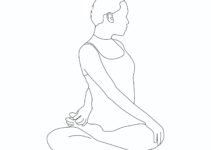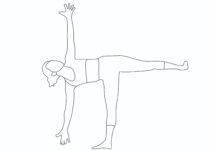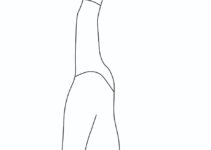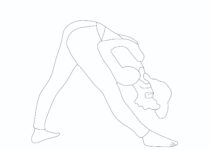Mountain pose meaning
The mountain pose is also known as Palm Tree Pose or Tadasana (ताडासन) in Sanskrit as in the final stage, the Yoga pose looks like a palm tree, so the name is. This is also known as the heavenly stretch pose, as one stretches oneself towards heaven. The counter pose of Tadasana is Sirsasana. Sarvangasana can also be practised. as a complementary pose of Mountain yoga.
How to do mountain pose
How to perform a palm tree pose is a straightforward procedure. Tadasana is the fundamental asana for all standing yoga poses. In the case of this Yoga pose, the alignment and muscle movement is beneficial in performing all the standing yoga poses. The different steps and techniques of Tadasana are being enumerated here.

- Stand erect on the ground with 15 cm apart
- With inhale, raise your arms upward by interlocking your fingers.
- Try to come on the toes by raising your heels and feel the stretching from toes to fingers.
- Maintain the pose as long as possible with slow and deep breathing.
- Come to the original position with a deep exhale.
- One can perform the number of rounds at one’s convenience after relaxing.
- In Iyengar Yoga, the Palm tree pose is performed by raising the hands over the head or keeping them at the sides of the legs
- In Vinyasa Yoga, Tadasana is performed while coming on toes.
- In Ashtanga Yoga, Tadasana is the beginning and ending Asana of Surya Namaskar.
Mountain pose benefits
The various therapeutic applications of mountain poses are given below:
- Increase height: The palm tree pose is one of the best yoga poses to increase the size of the growing children. Since it gives maximum stretch to the body from toes to fingers, it is helpful for those who desire to improve their height.
- Good for nerves: Since it gives optimum stretching to the nerves and muscles, it is helpful in the functioning of various body systems.
- Treat sciatica: It is suitable for sciatic patients if performed under an expert’s guidance.
- Enhance concentration: Improving balance and engagement and increasing alertness is good.
- Strengthen lower legs: The Asana strengthens the toes, ankles, knees, abdomen, buttocks, and the lower part of the legs.
- Weight Loss: It is helpful in shedding extra fat from different body parts.
- Relieve back pain: It is effective in treating backache.
- Hip mobility: It provides strength and mobility to the feet, legs, and hips.
- Art of standing: Practising the yoga poses regularly will teach one the correct way of standing.
- Reduce flat feet: It helps you to reduce flat feet.
- It also strengthens legs, knees, ankles, buttocks, lower abdomen, shoulders, and neck. It is also good for improving your posture.
Mountain pose precautions
Some of the few contradictions of the palm tree pose are:
- Women during pregnancy should skip this Asana.
- The patient with the varicose vein should avoid it.
- In the case of dizziness, it is better to perform this.
- This Asana shouldn’t be held longer for those with headaches, insomnia, and low blood pressure.
- An excess extension may cause knee problems.
Beginner’s Tip
Initially, it will be challenging to maintain the pose on the toes by raising the heels. It is better to perform the Yoga pose without coming into toes, i.e. one should experience the stretching from feet to fingers. It is not easy to stand erect with feet together, so you can start with the distance between your feet and gradually minimise the spread. Beginners should practice the pose standing against the wall. The beginners shouldn’t maintain the posture for a more extended period. It will come after certain practices and in achieving some sort of balance.





